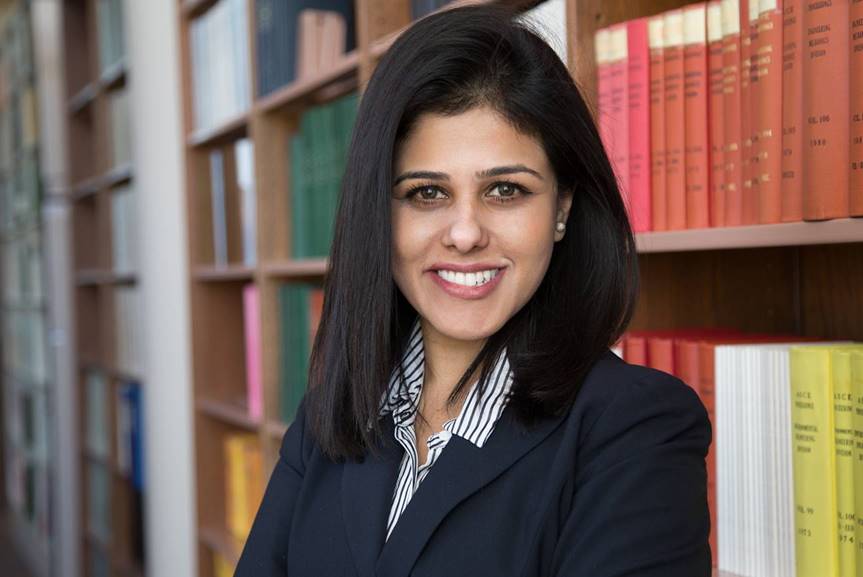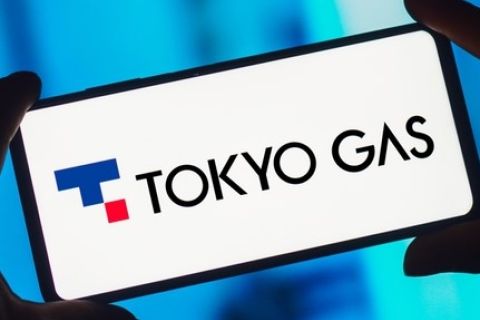Presented by:

This article appears in the E&P newsletter. Subscribe to the E&P newsletter here.
Wood Mackenzie expects energy emissions to peak by 2030 and states that $1 trillion worth of annual investment is needed to build new energy supply capacity. The research and consultancy firm also said peak demand for oil in its base case is set for 2039, and wind and solar's contribution to power generation will be 30% by 2040 in its base case.
In this exclusive roundtable with former Influential Women in Energy honorees, these tech leaders share their insights about trends, the energy transition and challenges in the energy industry:
- Zainub Noor, Halliburton Labs (2021 honoree); and
- Sarah Karthigan, Exxon Mobil (2021 honoree).
Trailblazers

Noor is the director for innovation and scouting with Halliburton Labs, an organization in Halliburton focused on advancing cleaner, affordable energy. Noor focuses on helping early-stage companies accelerate their journey to scale and commercialization, through industrial scaling capabilities within the Halliburton Labs ecosystem. She has held multiple positions related to technology development, strategy and business management. Most recently served as global R&D head for reservoir recovery and production operations in Landmark Halliburton, leading technology development to help energy operators worldwide in their digital transformation journey for optimizing asset development and field operations. She also serves on multiple energy industry forums and academic committees.

Karthigan is a reputed leader with a demonstrated history of leading digital transformation initiatives in the energy industry. She has been recognized for her work to accelerate the adoption of data science to enable data-driven decision-making across the integrated oil and gas value chain. She started her career at Exxon Mobil more than a decade ago. Since then she has held various roles of increasing responsibility in the areas of strategic planning, project management, scientific computing and data science. She currently leads the AI Ops practice focused on realizing self-healing wins for IT operations. As part of her current role, Karthigan is also responsible for managing external relationships with multiple technical business partners. She is a strong advocate for STEM programs and has led multiple science ambassador initiatives. She was awarded the Tribute to Women & Industry award that honors women who have excelled in their fields and made significant contributions to the industry in executive, managerial and professional roles.
E&P: What has been the largest technology accomplishment you've been involved in during your career?
Noor: Leading the digital transformation for oil and gas operations, from products focused on specific objectives to building an integrated platform with open architecture, incorporating data, modeling, artificial intelligence [AI] for better understanding and machine learning to predict behaviors, with broader objective to move towards autonomous field for the future. Halliburton has made huge strides in digital twins, bringing the hardware and software together and leading the way to maximize recovery. This required reorganizing my research and development organization to merge the various skillsets with cohesive teams, and I have been very fortunate to lead the efforts and see the results come through. We are not far from a time where we will have full autonomous field and autonomous rigs.
Karthigan: I'm passionate about applying AI and ML [machine learning] to solve large-scale problems in the energy sector. The opportunities that excite me the most are ones that expose me to new domains and help me learn new things. I'm currently engaged in leading the AI Ops strategy at Exxon Mobil to build self-healing solutions. This work has opened up the aperture for me to learn about adjacent domains such as automation, monitoring, etc.
E&P: What are the most important issues for the energy industry to focus on as it moves forward?
Karthigan: The most important issue facing the energy industry is helping to meet the dual challenge of fueling global economies while addressing the risks of climate change.
Noor: The key important issues or items that the energy industry needs to focus on are:
- Talent transformation and bringing cohesiveness to teams: We are always focused on technology, that sometimes we do not pay similar attention to talent transformation. The new generation of workforce are digital natives; they can grasp technology in no time. However, they require the right tools, guidance, training, mentorship and, most importantly, empathetic leadership to harness their potential and skills. The investment in talent transformation will ensure continued innovation and progress. We also need to break the silos to get tremendous amount of innovation. This is the last wall to break. In my opinion, the rise of citizen data scientists will have a major contribution. Therefore, it is important for companies to bring together talent transformation and skill acquisition to the teams. We have done tremendous work at Halliburton to focus on this with all our global organizations, for example, through academic partnerships. In Halliburton, all our projects are tied to talent transformation for sustainability of the business and its future success.
- Sustainability: The industry needs to focus on enabling the supply of sustainable, affordable and safe energy for all. ESG and innovation certainly do go hand in hand and play at every level of the organization—in technologies, people, processes and now data as well. It is key for improvements in all the environmental, social and governance factors. On the environmental side, the innovation objective is to reduce carbon footprint and make the processes more carbon and cost efficient. On the social side, the innovation [objective] is on talent transformation to upskill professionals and reduce repetitive work [as well as] improve health and safety standards for our workforce. And on the governance side, [it is] to minimize costs and improve return on investments. Most of the companies do realize this, as its key for long-term sustainability of any business.
- Energy transition: We need to reduce overall emissions, improve the energy efficiency and advance on clean energy development.
E&P: What message would you like to pass along to the industry?
Noor: The last two years have taught us all that we can only move forward together, as an industry and as a community. The last decade was focused on breaking siloes within the company and technologies. If we zoom out and look at macro level, we have silos on companies and industry. We need to break these higher-level industry siloes to become more collaborative and solve challenges together. A significant portion of world population still doesn’t have access to energy, power or electricity. Around 1 billion people in the world do not have access to electricity, and more than 40% of the world population doesn’t have access to clean fuels. No one person or company can do it alone to generate value for broader humanity; the world needs to move forward together.
E&P: Do you have advice for future "Influential Women in Energy" leaders, decision-makers and trailblazers?
Noor: Be proactive, always be ready for the change, and continuously build knowledge and learn to expand your horizons. It is also crucial to have a supportive family; having a supportive partner has been a catalyst in my career. As women, and especially as mothers, we wear multiple hats simultaneously, and therefore, a partner that understands your career goals and stands with to you achieve them helps you thrive and makes the journey much smoother and exciting. Finally, empathy is the most important trait for leadership, to connect people, inspire them, empower them to deliver the best for themselves, their teams and their organization. And finally, empathetic leadership is the fundamental enabler for the transformation of our industry and success of its future.
Karthigan: My one advice to the amazing women trailblazers of the future would be to ‘keep focusing on opening the door wider than you found it.’ I heard this message at the 2021 Women’s Forum for the Economy & Society summit, and it struck a chord with me. From breaking barriers to building bridges, we women are in this together.
Meet the 2022 Influential Women in Energy honorees!
Nominate a female colleague for the
2023 Influential Women in Energy program.
Recommended Reading
DXP Enterprises Buys Water Service Company Kappe Associates
2024-02-06 - DXP Enterprise’s purchase of Kappe, a water and wastewater company, adds scale to DXP’s national water management profile.
ARM Energy Sells Minority Stake in Natgas Marketer to Tokyo Gas
2024-02-06 - Tokyo Gas America Ltd. purchased a stake in the new firm, ARM Energy Trading LLC, one of the largest private physical gas marketers in North America.
California Resources Corp., Aera Energy to Combine in $2.1B Merger
2024-02-07 - The announced combination between California Resources and Aera Energy comes one year after Exxon and Shell closed the sale of Aera to a German asset manager for $4 billion.
Vital Energy Again Ups Interest in Acquired Permian Assets
2024-02-06 - Vital Energy added even more working interests in Permian Basin assets acquired from Henry Energy LP last year at a purchase price discounted versus recent deals, an analyst said.
DNO Acquires Arran Field Stake, Continuing North Sea Expansion
2024-02-06 - DNO will pay $70 million for Arran Field interests held by ONE-Dyas, and up to $5 million in contingency payments if certain operational targets are met.





